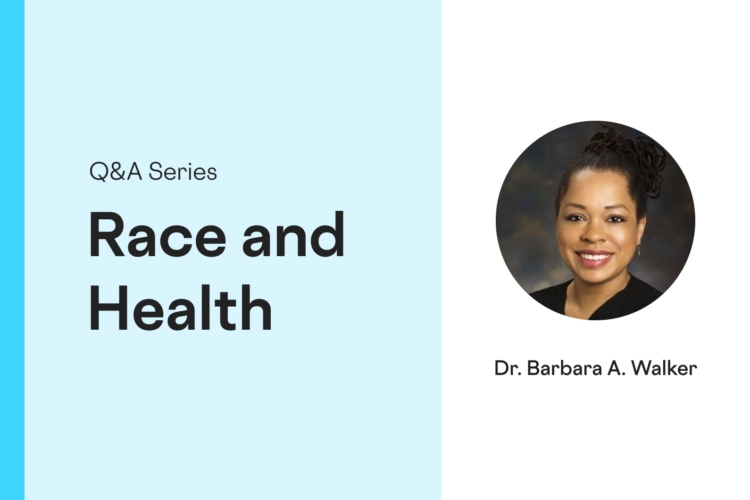This white paper was co-written by Ami Parekh, M.D., J.D. and Nupur Srivastava.
As employers seek to insulate their businesses from further shocks due to COVID-19 and ensure that their members stay healthy and productive, virtual care has emerged. So much so that the U.S. has already experienced a 57% increase in the number of people who used telemedicine in 2020.
But what’s to stop this trend from reversing once safety restrictions are lifted and, more importantly, the majority of individuals get vaccinated? The answer is having a virtual care experience that’s 10x better than what it is currently.
Such an improvement is entirely possible, given the right types of technological advancements are put in place. Take a look at our predictions when it comes to how technology will help drive a virtual-first healthcare model:
1. Remote patient monitoring (RPM) devices will become as ubiquitous as smoke detectors.
In May of 2011, the Royal Bank of Scotland released the world’s first mobile banking app ¹⁵. Fast forward eight years to 2019 and approximately 89% of people (and 97% of millennials) use mobile banking to help manage their personal finances¹⁶. We expect the RPM device usage to follow a similar exponential growth trajectory.
The RPM device market is still nascent today, but the onset of COVID-19 contributed to a steep increase in pulse oximeter sales and doctors have begun endorsing these devices as effective preventative measures¹⁷ ¹⁸. The ramp-up of virtual primary care will further accelerate RPM adoption, with RPM device market size expected to reach $1.9 billion by 2026¹⁹. Patients will use RPM devices during virtual primary care visits and these devices will become core to the regular experience of most Americans—just as we saw with mobile banking apps. Ten years from now, as tech-savvy generations start families and drive healthcare decision-making in the US, RPM devices will not only become a standard feature of provider appointments, but they will also become a standard feature of our homes alongside smoke and carbon monoxide detectors.
2. Electronic health record (EHR) interoperability will remain a challenge for many years, and healthcare navigators will play a key role in records collection on behalf of patients as more care shifts to a virtual setting.
EHR adoption has come a long way in the past decade, driven by meaningful use incentives. As of 2017, 96% of acute hospitals and 80% of office-based physicians had adopted certified EHR technology²⁰ ²¹. However, transferring records across providers and health systems has remained challenging. The average hospital has 16 EHR systems installed across its affiliated practices²².Many systems customize protocols within their own EHR, including the patient identifier used to match a patient to a health record. This results in a significant number of disparate, inconsistent systems that must be harmonized.
National health information exchanges (HIEs) like the Commonwell Health Alliance have greatly improved EHR interoperability by creating standards that enable its member organizations to communicate with one another. Included Health’s EHR participates in several HIEs and is able to access approximately 95% of Athenahealth’s records, 90% of Epic’s records and 70% of Cerner’s records, to name a few.
The fact that interoperability rates have yet to reach 100% means that patients still have to collect some of their own records. Patients may elect to remain with their in-person provider to avoid that switching cost. This is where healthcare navigators play a key role in driving virtual care adoption: navigators can collect the records on behalf of the patient. This unburdens the patient, ensuring that from the member’s perspective there is complete interoperability and enabling a much more comfortable transition to virtual care. We expect that healthcare navigators will play this role for many years while we wait for complete EHR interoperability.
3. Machine learning algorithms will soon power every aspect of care navigation: (i) identifying those in need, (ii) triaging patients to the appropriate site of care, (iii) selecting the appropriate provider to treat them and (iv) diagnosing the patients themselves.
Technology has changed the way we live our lives. Physicist and author Michio Kaku put that into perspective when he pointed out how “today, your cell phone has more computer power than all of NASA back in 1969, when it placed two astronauts on the moon.” Machine learning (ML), also known as artificial intelligence (AI), is the technological advancement that will most transform our lives. Healthcare lags other industries in adopting technology to operate more efficiently, but promising early results inpatient healthcare navigation show the promise of ML to simplify healthcare.
Look no further than the doctor selection process. Patients want the best care for themselves and their families, but the lack of quality transparency makes this task unnecessarily stressful for patients. At Included Health, we set out to change that by developing a vast system of ML algorithms to intelligently match a patient to a doctor. By measuring the clinical quality and cost-effectiveness of doctors and bumping that up against clinical needs of the patient, we can connect people to measurably better healthcare. It took over $75 million (and counting) to set up the data and talent to do this properly, but with lives at stake this has to be done with care and precision. The results speak for themselves—Harvard researchers have validated our quality metrics and we see that patients (on a risk-adjusted basis to control for population differences) who see better doctors spend go to the ER less, spend less on hospital treatments and spend less on branded drugs.
Other areas of healthcare navigation where ML will play a big role for us are patient risk identification and patient triage. For patient risk, our data and clinical teams can use ML for pattern recognition to identify early markers of risk, be they social determinants of health or combinations of health events that indicate a future health event is likely. That way, we can focus on engaging those patients before they schedule a surgery or end up in the ER. For triage, we can use similar pattern recognition about a given patient so that when a person comes into our platform with a need, we can automate the triage into the right care—an expert medical opinion, enrollment in chronic care management, a referral to a local doctor, or even a referral to the ER, so that the person doesn’t need to try to guess at what they should do.
ML-enabled diagnosing is a little further out. The data required for diagnosing is very fragmented (scans, tests, unstructured doctors notes, medical history) and makes it a more complex task. Recent efforts to apply ML to really complex healthcare tasks like diagnosing cancers have been rocky, but the rapid progress on autonomous vehicle capabilities from the likes of Google, which has already logged 20 million miles on public roads, all with an ML algorithm at the wheel²³, indicates that it’s only a matter of time before ML can accurately diagnose complex conditions.
With the advent of smartphones and wireless devices of all kinds, patients are becoming increasingly tech-savvy. Meanwhile, continuing advances in machine learning are improving the way we can access and receive care. This is making the virtual setting a viable framework in which to administer high-quality healthcare. And when layered with best-in-class navigational tools, it’s a model that provides patients with an integrated and seamless experience that puts an emphasis on their healthcare needs first and foremost.
Stay tuned for part 3 of our future of virtual care series. Our final installment looks at how changes in regulations and payment models are helping increase access to care via virtual care.
16. Liss, Samantha. (2020). “After decades as a hospital operator, Tenet shifts its focus to surgery centers.” Healthcare Dive.
17. NatWest Group – Heritage Hub
18. Phaneuf, Alicia. (2019). “State of mobile banking in 2020: top apps, features, statistics and market trends.” Business Insider.
19. Wooley, Sean. (2020). “Is coronavirus causing a run on pulse oximeters?” MassDevice
20. Levitan, Richard. (2020). “The Infection That’s Silently Killing Coronavirus Patients.” The New York Times.
21. Adroit Market Research. (2020).
22. ONC. (2019). “Office-based Physician Electronic Health Record Adoption,” Health IT Quick-Stat #50.
23. ONC. (2019). “Percent of Hospitals, By Type, that Possess Certified Health IT,” Health IT Quick-Stat #52.



